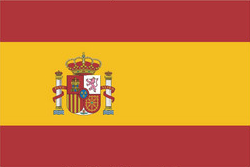
The two Galileo satellites and their upper stage have been enclosed within their protective fairing, and moved to join the Soyuz rocket on the launch pad.
The halves of the fairing were sealed together around the satellites, their supporting dispenser and Fregat-MT upper stage on Friday, within the Upper Composite Integration Stand of building S3B of Europe’s Spaceport in French Guiana.
Yesterday, the Upper Composite was moved to the launch site, for vertical mating to its three-stage Soyuz ST-B rocket. The 4.1 m-diameter fairing protects the satellites from the stresses of launch and flight through the bulk of the atmosphere. It will be ejected about three and a half minutes into the flight, when the upper stage reaches the top of the atmosphere.
Fregat, modified to carry extra propellants, will fire for the first time about 10.5 minutes after launch, raising the satellites up to orbital velocity and their operating altitude of 23 222 km. As it climbs, Fregat will spin slowly in ‘barbecue mode’, to keep the temperatures of the satellites even.
From launch to final deployment, when the dispenser releases the satellites sideways in opposite directions, will take three hours and 44 minutes. The launch is scheduled for 18:15:00 GMT (20:15:00 CEST) on 12 October.
Galileo taking shape
This follow-up launch marks a major step for Europe’s own satellite navigation system. Four is the minimum number of satellites needed to achieve a navigational fix on the ground, with one satellite each to measure latitude, longitude, altitude and provide a time reference.
So once this second pair of satellites has been commissioned and tested, the quartet will form a completely operational mini-constellation that will be used to validate the Galileo system.
The performance of the satellites in space together with the worldwide ground infrastructure serving to maintain Galileo’s service accuracy will be assessed in depth, to prepare the way for the launch of further satellites and then deliver initial services by mid-decade and finally build up to full operational capability.
These two new satellites are also the first to carry search and rescue antennas to pinpoint aircraft and ships in distress as part of the international Cospas–Sarsat system.
Follow the Galileo IOV launch live
Join ESA for the launch of the second pair of Galileo satellites, aboard a Soyuz ST-B rocket from Europe’s Spaceport in French Guiana. Launch is scheduled for 18:15:00 GMT (20:15:00 CEST) on 12 October. Live streaming will begin at 17:48 GMT (19:48 CEST) for about 1 hour.
From launch to final deployment, when the dispenser releases the satellites sideways in opposite directions, takes three hours and 44 minutes. Live coverage resumes at 21:25 GMT (23:25 CEST).









